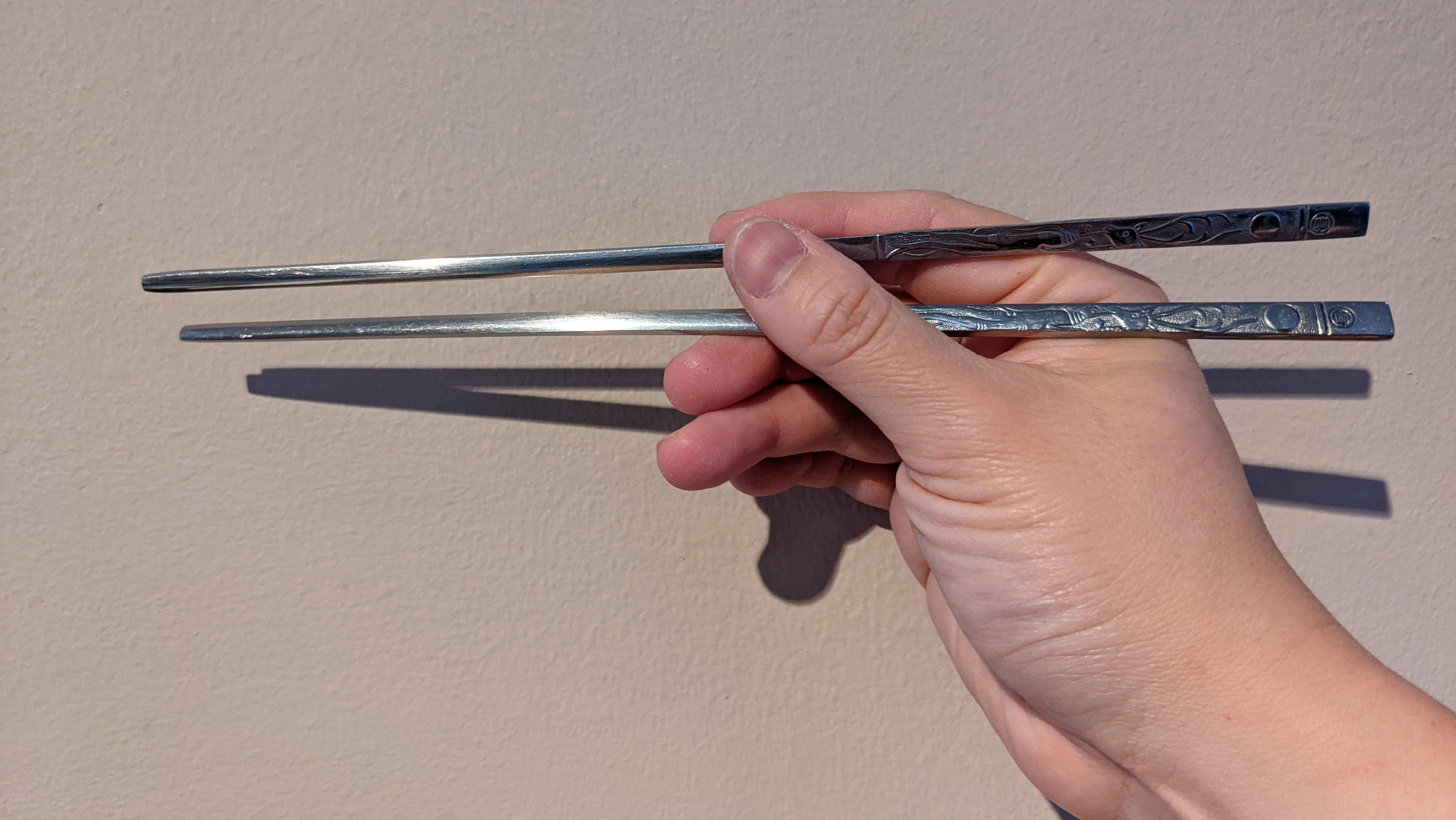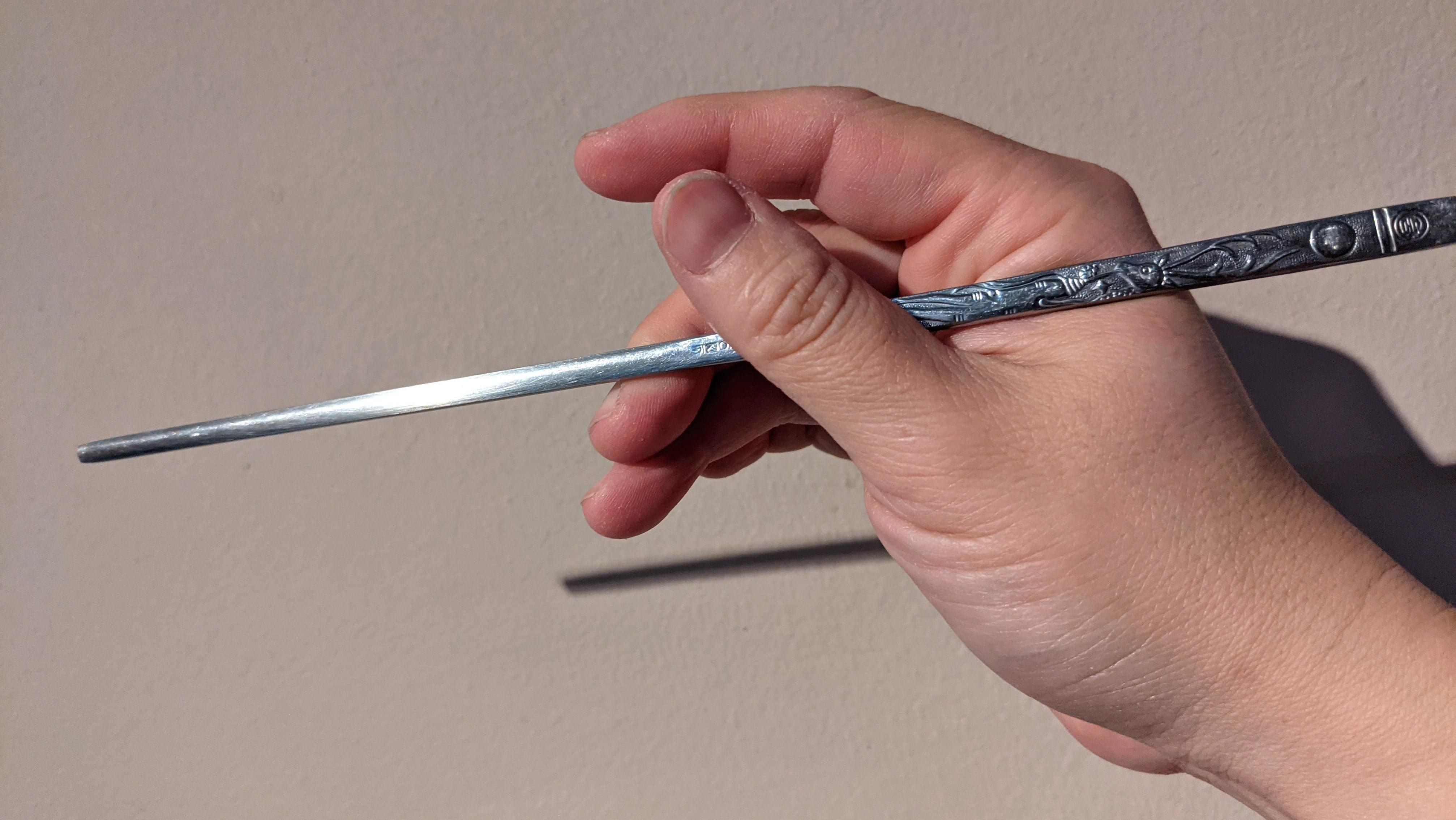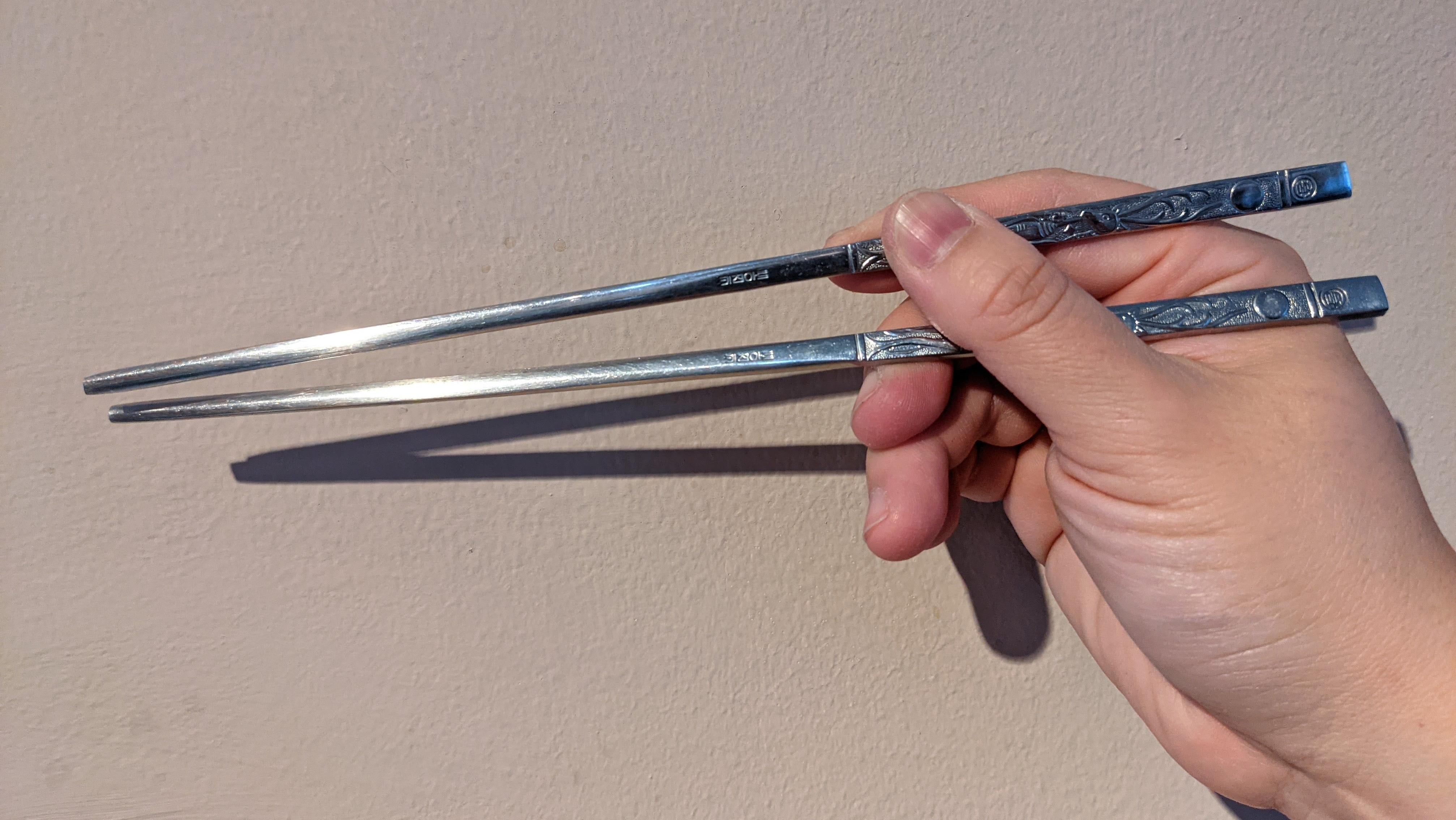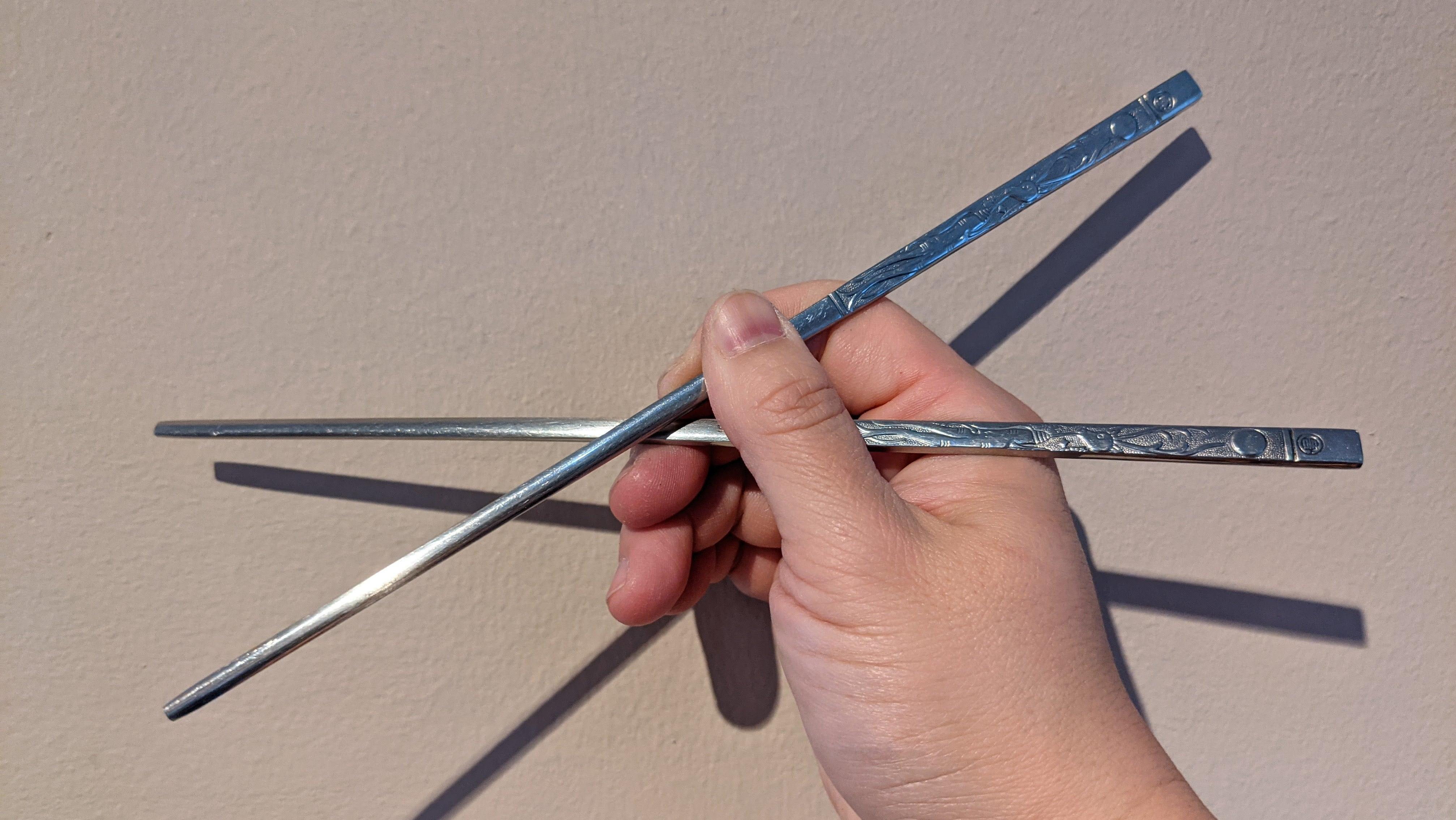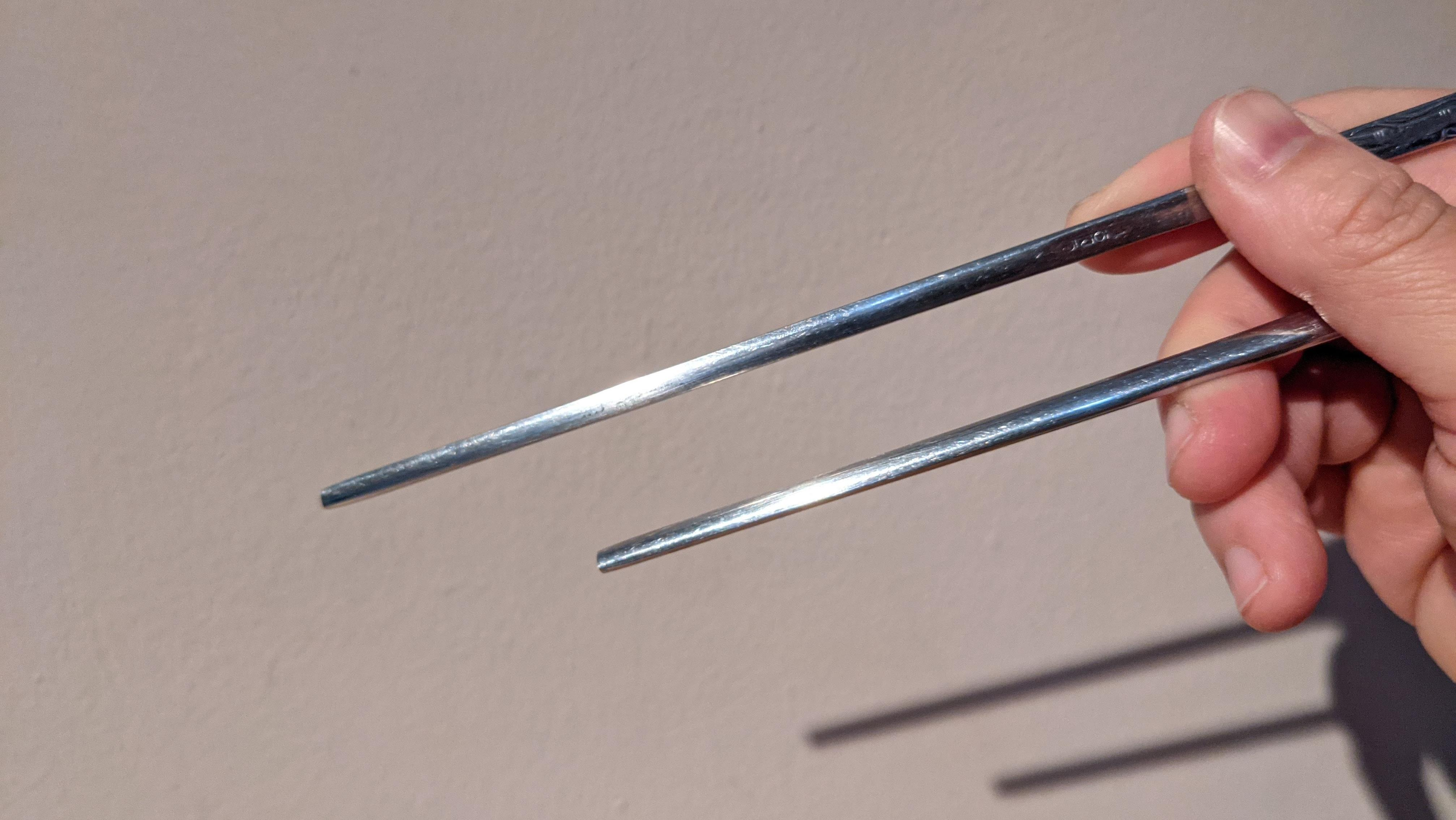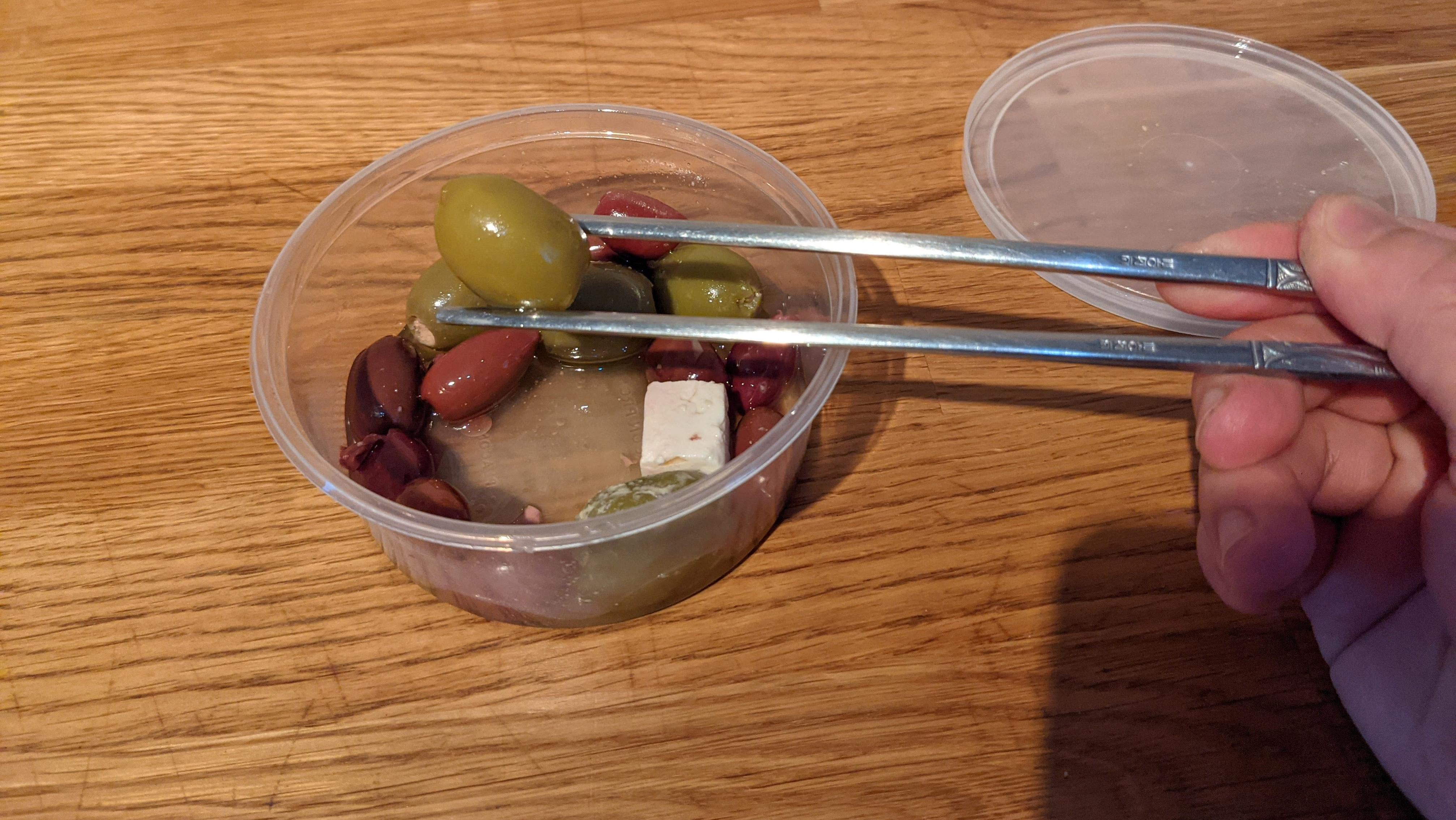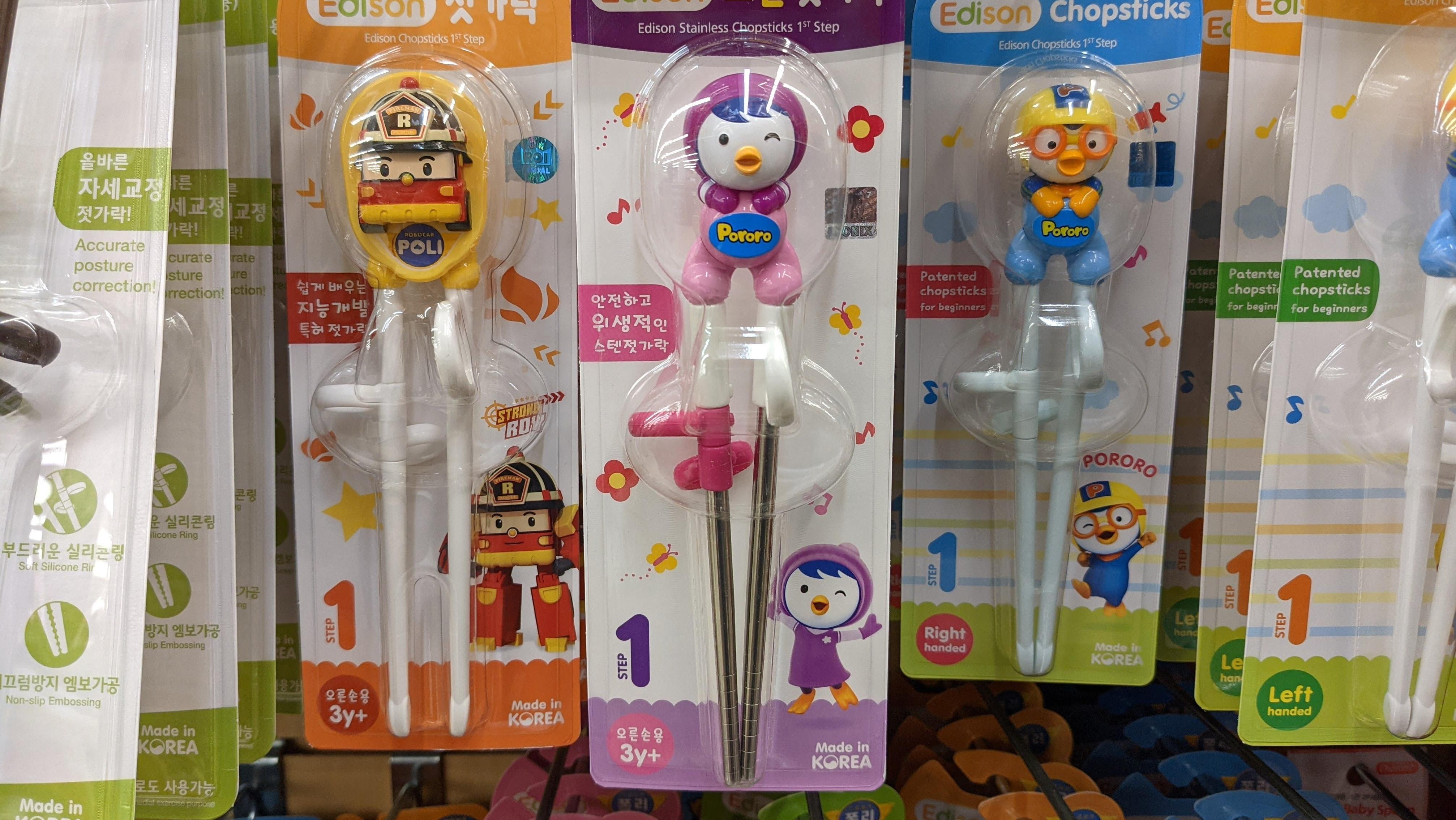How To Hold Chopsticks Properly
It takes practice, but don't worry—nobody is judging you.
Speaking candidly as an Asian-American, talking to people about chopsticks can be tricky. A lot of times when I'm with chopstick novices, people become embarrassed when they admit they have a hard time using them. Guess what? That's totally okay.
Some people have even admitted to me that they've been so shy about their inability to use chopsticks that they avoid Asian restaurants altogether, which doesn't need to happen! Ask for a fork if you need one, and I promise a million times nobody is judging you.
Since chopsticks can be a source of embarrassment, it can be hard to ask your Asian pals for help. I grew up using chopsticks, but of course it was something I had to learn over time. I still drop food on the table sometimes. That isn't considered a faux pas. (Obviously cleaning up after yourself is a must, but that's easy enough.)
I thought I'd give you all a little easy primer (hopefully) on how to use chopsticks. It's simple, but it does take some practice like any maneuver does. Eventually your dexterity will improve until grabbing noodles, banchan, or sticky rice becomes second nature.
The bottom chopstick is key
It all starts with the bottom chopstick, the one I consider the anchor.
The key with this chopstick is that it doesn't move. Repeat after me: do not move the bottom chopstick. The way I hold it is by pushing the chopstick against the side of my middle finger, using pressure from the base of my thumb to anchor it in place.
I've noticed that many people struggle with this part. It's easy to assume that with two chopsticks, you'd be moving them independently of each other to pick up each bite, but that's not how it's done. If you try moving both chopsticks, grabbing anything becomes infinitely wobblier.
If you find this part to be difficult, just press down a little harder with the base of your thumb, willing yourself not to move the bottom chopstick. Got it? You've got the most important thing figured out now.
The top chopstick is the mover
On to the top chopstick. This is the only one that moves.
You'll be using this one as the dynamic part of the duo, to open and close the chopsticks to pick up food. Pinch it against your index finger using your thumb, like in the picture above. Notice that the base of the top chopstick is firmly placed along nearly the entire length of my index finger to keep it from wiggling and getting loose. Meanwhile, the base of my thumb is still being used to hold that bottom chopstick in place.
This is where dexterity practice comes to play. Some foods are easier to grab with chopsticks than others, like wide flat noodles in a thick sauce versus small individual beans. Sticky rice is pretty easy to pick up too, since you can grab it in imperfect bite-sized clumps.
You'll be moving the top chopstick by its base, up and down slightly to widen and narrow the gap between the tips of each chopstick. Again, the key is to keep that bottom chopstick anchored tightly while your index finger and the tip of your thumb do all the moving with the top one.
Avoid the X
You want to prevent your chopsticks from crossing into an "X" formation. This means you've fully lost control. If you've been holding food and your chopsticks slip into this formation, that bite is long gone. I am sure what's happening in the above photo is familiar to many of you.
This happens for multiple reasons. One is, you might have let the bottom chopstick slip and move upwards, in which case your anchor chopstick is too loose and you've got to tighten up your thumb.
And another reason why your chopsticks can be in an X shape is because your pencil grip on the top chopstick has become loose. That's fixed by pinching the top chopstick firmly against the side of your index finger at all times.
Resetting your grip
You know it's time to reset your chopsticks if your grip has shifted enough that one tip is extended significantly further from the other, like in the photo above.

While loosely maintaining your chopstick grip, all it takes is a quick gentle tap on a flat eating surface to reset and push the chopsticks into your hand so that the tips are now even.
Practice, and try the round food challenge
At the beginning, if you're practicing, I recommend you try picking up larger food items, like thick-cut sashimi, firm tofu, and wide noodles. Once you're comfortable with those, you can progress to thin noodles and smaller items.
If you're testing to see how far you've progressed, try to pick up round food with your chopsticks. Round items are pretty challenging (especially if they are small), so if you find yourself picking these things up with ease, your skills are excellent.
About training chopsticks
If you've ever gone through the housewares section at an Asian market, you can find training chopsticks. Many of them, like the ones in my photo, are for kids and are adorable to look at, and they place your fingers snugly in the correct position for learning purposes. They also make great gifts.
There are also assisted chopsticks for adults as well (both right- and left-handed grips), for those who are in the process of learning or have mobility or dexterity issues. If you have difficulty holding utensils, the finger loops on the assisted chopsticks will keep them from falling out of your hands.
When it comes to chopsticks, the best teacher, as you can imagine, is repetition. So what I'm saying is, you should really find this as an excuse to eat much more Asian food. That'll get your chopstick skills up in no time.
If you've got any personal pointers or tips that helped you along the way, feel free to contribute in the comments, and never, ever, be afraid to ask for help, or a fork, if you need one.
